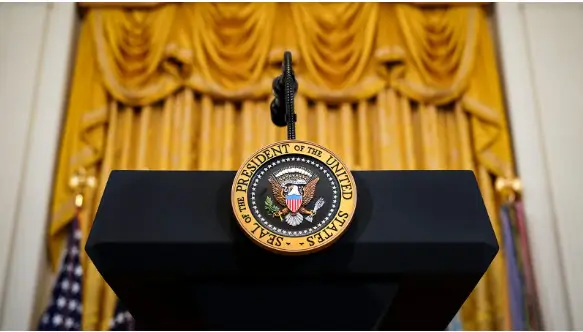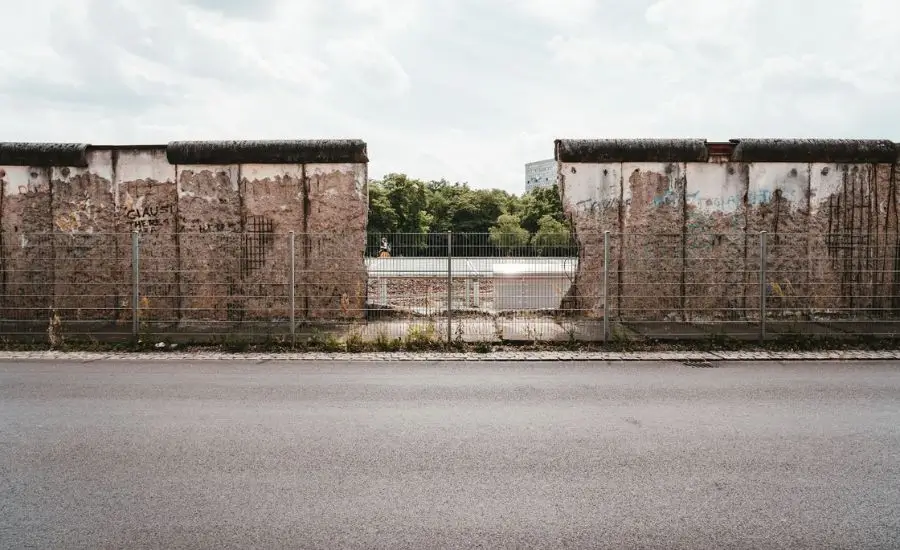Written By: Brad Campbell | November 8, 2024
When people think of presidential protection, the Secret Service is probably the first thing that comes to mind, but bulletproof glass also plays an important role in protecting the president!
The secret service provides the president, vice president, and other high-profile individuals (including former presidents) with a dynamic form of physical protection, keeping an eye out for threats and securing nearby areas to ensure the safety of these individuals.
Bulletproof glass, on the other hand, provides a more static form of physical security, protecting the president against ballistic attacks and assassination attempts, particularly when traveling in a vehicle or giving a speech on a stage.
Though various presidents have used different forms of ballistic protection since WWII, it wasn’t until Reagan’s presidency in the 1980s that we saw more public instances of bullet-resistant glass protecting the president.

Since the assassination of President McKinley in 1901, the organization tasked with protecting the life of the POTUS is the Secret Service.
You might be familiar with images of sunglass- and suit-clad Secret Service agents escorting the presidential motorcade of heavily armored, black limousines, which are reinforced with the president’s bulletproof glass and other ballistic-grade materials.
In the event that a threat slips past the watchful gaze of the Secret Service, these bullet-resistant materials continue to physically protect the president.
However, the president wasn’t always so protected by bulletproof glass, which meant the Secret Service was both the first and last line of defense against threats.
In fact, the original motorcades that presidents traveled in, alongside Secret Service agents, consisted of horses and carriages — there was nothing to be seen of bullet-resistant presidential protection in the early 1900s.
As the automobile gradually replaced horse and carriage as the preferred mode of transport, the POTUS and his cohort naturally began to travel in top-of-the-line vehicles.
However, it wasn’t until the United States got involved in the Second World War that the Secret Service began to implement bulletproof glass in the president’s protective net.
In 1941, President Roosevelt became the first president to employ the use of an armored car, when he started riding in an armored limo that the Treasury Department had seized from notorious mobster Al Capone.
Since bullet-resistant security technology was relatively new at the time, the vehicle’s only ballistic-grade materials were its windows — the body did not contain any kind of bullet-resistant panels.
While presidents continued to ride around in various versions of armored cars and limousines in the decades between Roosevelt’s and Kennedy’s presidencies, these vehicles were often open topped.
No matter how much armor a vehicle has, an open-topped vehicle does nothing to protect the riders from snipers in high positions. This is a fact that the world was made tragically aware of on November 22, 1963, when Lee Harvey Oswald shot and killed President Kennedy as he was sitting in the back of his 1961 Lincoln Continental limousine.
This was the last time a US president would travel without full ballistic-grade protection surrounding them in their motorcade vehicle.
After Kennedy’s assassination, the presidential limo was given a full ballistic-grade retrofit. It weighed a whopping one ton more than the original when it was returned to the Secret Service after the armor and security glazing retrofit.
In 1987, the world watched President Reagan give his infamous Berlin Wall speech from behind two very chunky sheets of bullet-resistant glass. These panels were intended to protect the president from any assassination attempts as he stood just 100 yards from the Berlin Wall and called for it to be torn down.

While presidents had been protected by bullet-resistant glass at inaugurations in past years, Clinton’s inauguration in 1993 is when we can see it taking on the modern form that we see today. President Clinton watched the inaugural parade, was sworn into office, and delivered his inaugural address all from behind presidential bulletproof glass.
If you look back at pictures and footage of Obama’s inauguration, you can see that he is protected by the same type of glazing that we saw used in the 90s. This goes to show that the president and bulletproof glass have become inseparable at public appearances where the threat of a ballistic attack is high.
These days, whether a president is getting inaugurated, traveling in their motorcade, or giving a speech abroad, they are almost always protected by bullet-resistant security glazing.

To conclude our look at the history of the president and bulletproof glass, it’s important to note that, although the president is surely protected by the most bullet-resistant security glass available today, no ballistic-grade glazing can be 100% bulletproof. A high enough volume of high-caliber rounds can eventually penetrate any type of bullet-resistant glass.
Additionally, unless the president is completely enveloped in bullet-resistant glazing, there’s always a chance that an attacker can find a gap in the president’s bulletproof glass. This is why a multi-layered approach to security that involves the Secret Service, presidential bulletproof glass, and other measures, is required to ensure the safety of the POTUS.
For security reasons, it’s impossible to find out what the exact composition of the bulletproof presidential security glazing is. However, we can say with a fair degree of confidence that it is made out of some type of glass-clad polycarbonate material.
Glass-clad polycarbonate is composed of a combination of laminated security glass on the attack side (the outside) and polycarbonate-based plastic on the safe side (the inside).
This unique composition provides the highest level of ballistic protection you can achieve with any combination of materials today, while still allowing the panels to look, feel, and function like traditional glass.
Presidential protection aside, bullet-resistant glass-clad polycarbonate is intended to resist bullets, blasts, and forced entry, and is suitable for a wide range of commercial security applications.
The same type of ballistic-grade glazing used by the president can also:
It’s certainly interesting to take a look back in time and see how far we’ve come in terms of ballistic-grade protection of property and people. Looking at the history of the president and bulletproof glass gives us a prime example of the evolution of bullet-resistant glazing and its applications.
Indeed, it’s hard to even imagine that there was once a time when individuals as important as the president would travel or give public speeches without being surrounded by at least some ballistic-grade security glazing!
This is especially true since the same type of bullet-resistant security glazing used by the president and other high-profile individuals is now affordable and accessible for businesses and commercial buildings of all shapes and sizes.
If you’re looking for the highest level of ballistic-grade glass protection to secure your property against active threats, forced entry, and more, contact Riot Glass today for a complimentary consultation.

HOW CAN WE HELP YOU?
